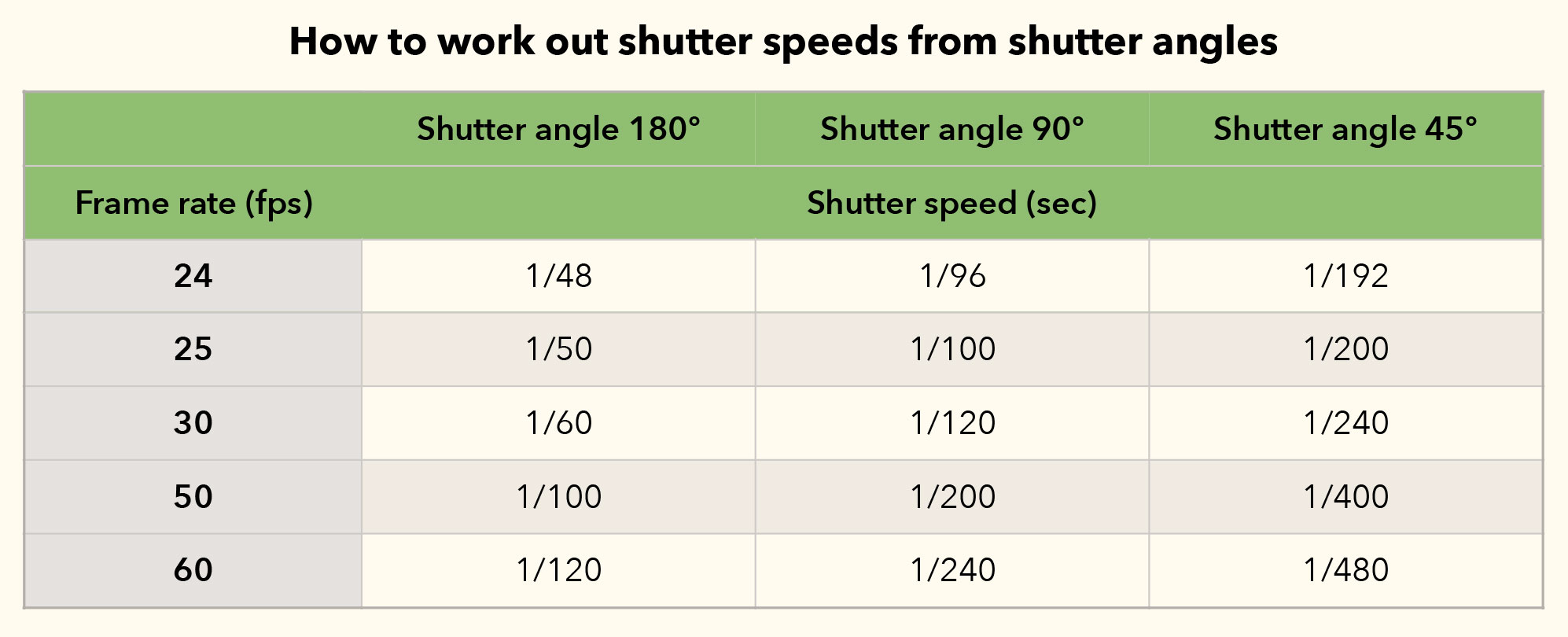Cheat sheet: Shutter angles vs shutter speeds
If you are a photographer shooting video, sooner or later you'll come up against shutter angles instead of shutter speeds!

In video, you need to adjust the shutter angle and not the shutter speed. But what is a shutter angle - and why do we need a different term? It’s not just videographers being awkward! The concept of shutter angles rather than shutter speeds makes a lot of sense for video. They are effectively the same thing, but you need to be able to translate one into the other. That’s because mirrorless and hybrid cameras tend to work exclusively with shutter speeds and it’s only full-on cinema cameras that swap to shutter angles.
Working with shutter angles not shutter speeds can actually make video exposure decisions simpler. You start with the frame rate of your project or movie, choose the best shutter angle for the look you want, and from then on it's only the lens aperture (iris) and ISO you need to worry about.
How shutter angles work
The jargon goes back to the design of old movie cameras with rotating shutter mechanisms. Each full rotation of the shutter corresponded to a single frame of film. But the shutter didn’t stay open for the full rotation. Then and now, there’s always a compromise between exposures short enough to stop too much subject movement and long enough to capture enough movement blur for smooth looking motion.
And this all comes down to ‘shutter angle’, which is the proportion of the time the shutter is open for each frame. Cameras don’t use circular shutters any more but the jargon has stuck.
Generally, videographers will use a shutter angle of 180º – the shutter is open for half the duration of the frame. This is reckoned to give a good compromise between smoothness and detail.
However, if there’s a lot of subject movement or fast camera movement, it’s common to swap to a shorter shutter angle. The movement looks more ‘choppy’ but there’s less movement blur.
This is just the same as changing the shutter speed when shooting video, but with shutter angles it’s expressed as the proportion of the time the shutter is open, not a fixed shutter speed. Why? Because it relates to the frame rate you’re using, which is highly relevant. Regular shutter speeds don’t.
Get the Digital Camera World Newsletter
The best camera deals, reviews, product advice, and unmissable photography news, direct to your inbox!
Translating shutter angles into shutter speeds
So if you’re using a regular camera that only has shutter speeds, but you want to work with ‘shutter angles’, what do you do? You can work it out yourself with some simple arithmetic, but here’s a table which should make it clear.

You start with the frame rate for your project in the left column, then choose the column for shutter angle you want and read off the corresponding shutter speed below.
We’ve only included three shutter angles, but they are pretty common choices. Cameras don’t offer shutter angles greater than 180º anyway, and for most shooting a 45º shutter angle might be as ‘choppy’ as you want to go.
The other way to look at this is if you’re shooting in bright light but you want to use a wide lens aperture, you’re going to need a very fast shutter speed. That will correspond to a very narrow shutter angle, so you’re not going to get very smooth movement. That’s why videographers make so much fuss about ND filters!
Read more:
• Best ND filters
• Best variable ND filters
• Best video tripods
• Best gimbals

Rod is an independent photography journalist and editor, and a long-standing Digital Camera World contributor, having previously worked as DCW's Group Reviews editor. Before that he has been technique editor on N-Photo, Head of Testing for the photography division and Camera Channel editor on TechRadar, as well as contributing to many other publications. He has been writing about photography technique, photo editing and digital cameras since they first appeared, and before that began his career writing about film photography. He has used and reviewed practically every interchangeable lens camera launched in the past 20 years, from entry-level DSLRs to medium format cameras, together with lenses, tripods, gimbals, light meters, camera bags and more. Rod has his own camera gear blog at fotovolo.com but also writes about photo-editing applications and techniques at lifeafterphotoshop.com
